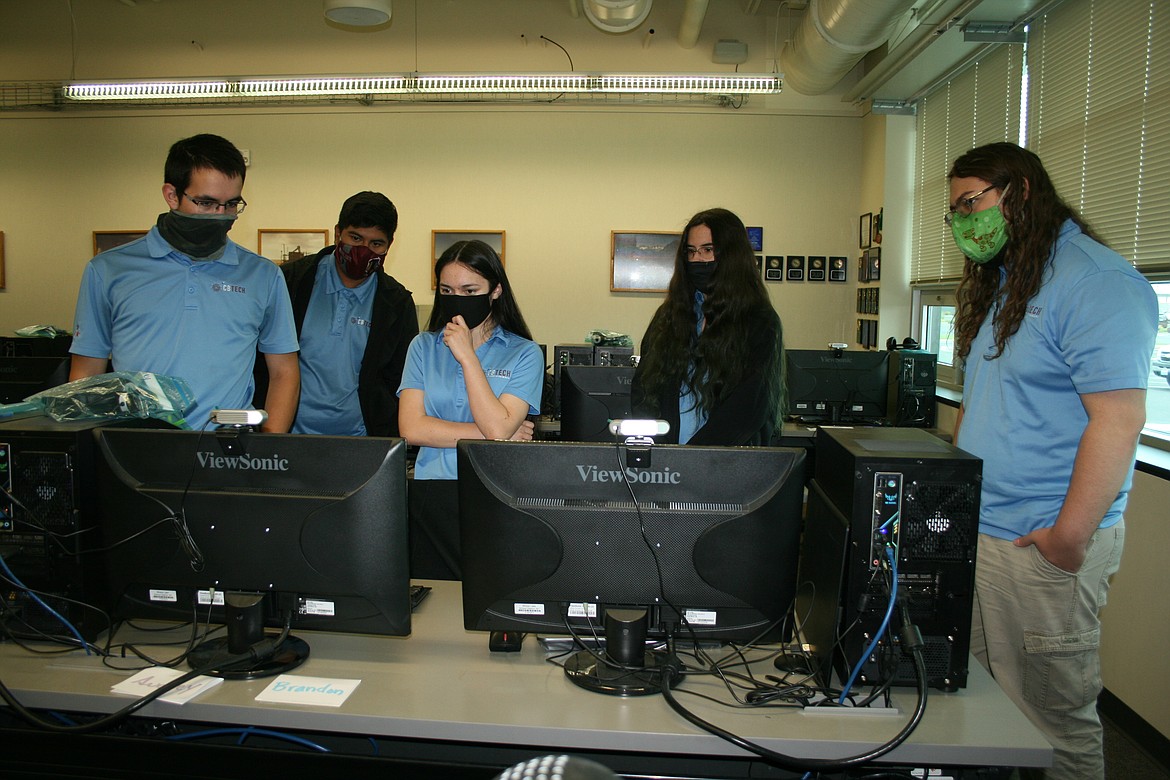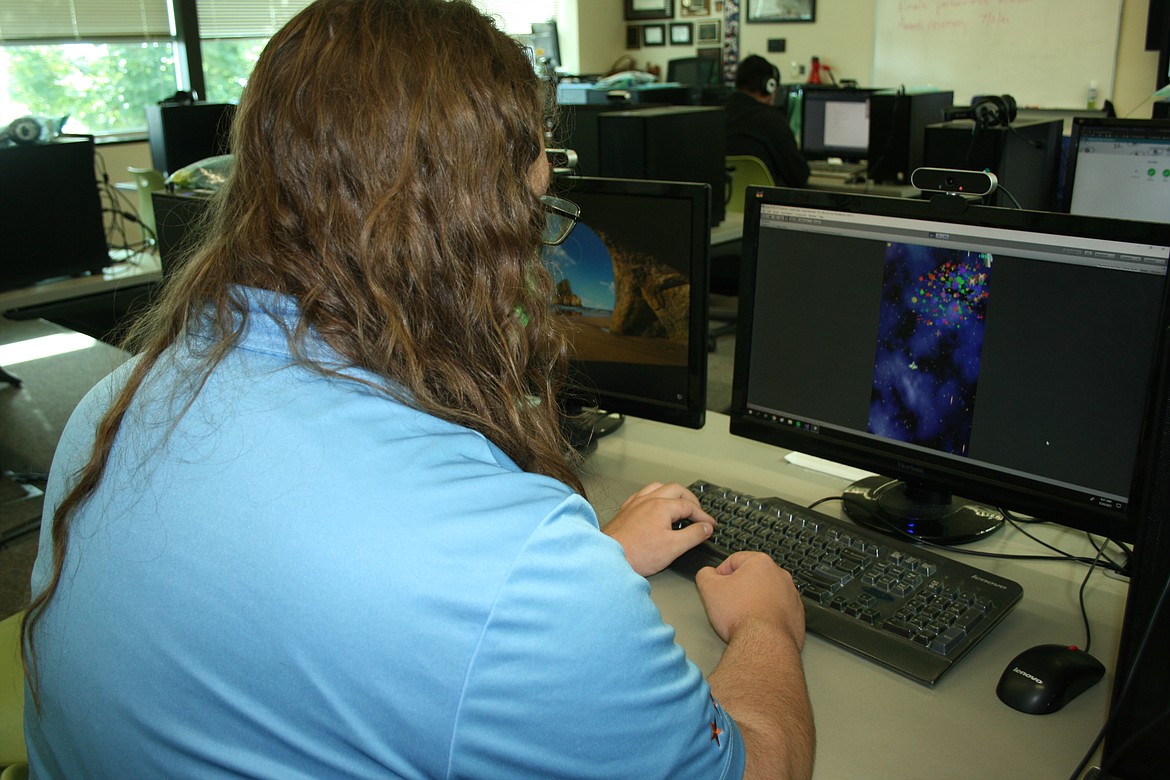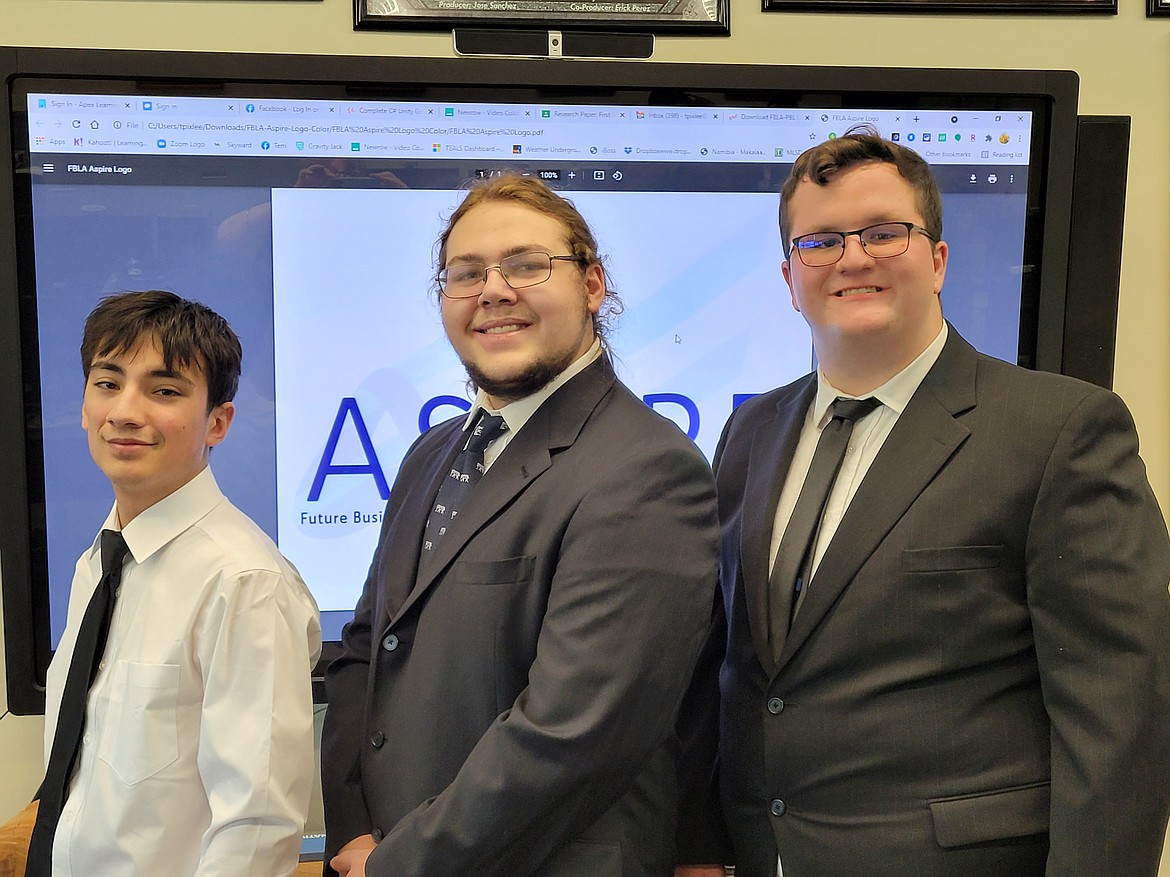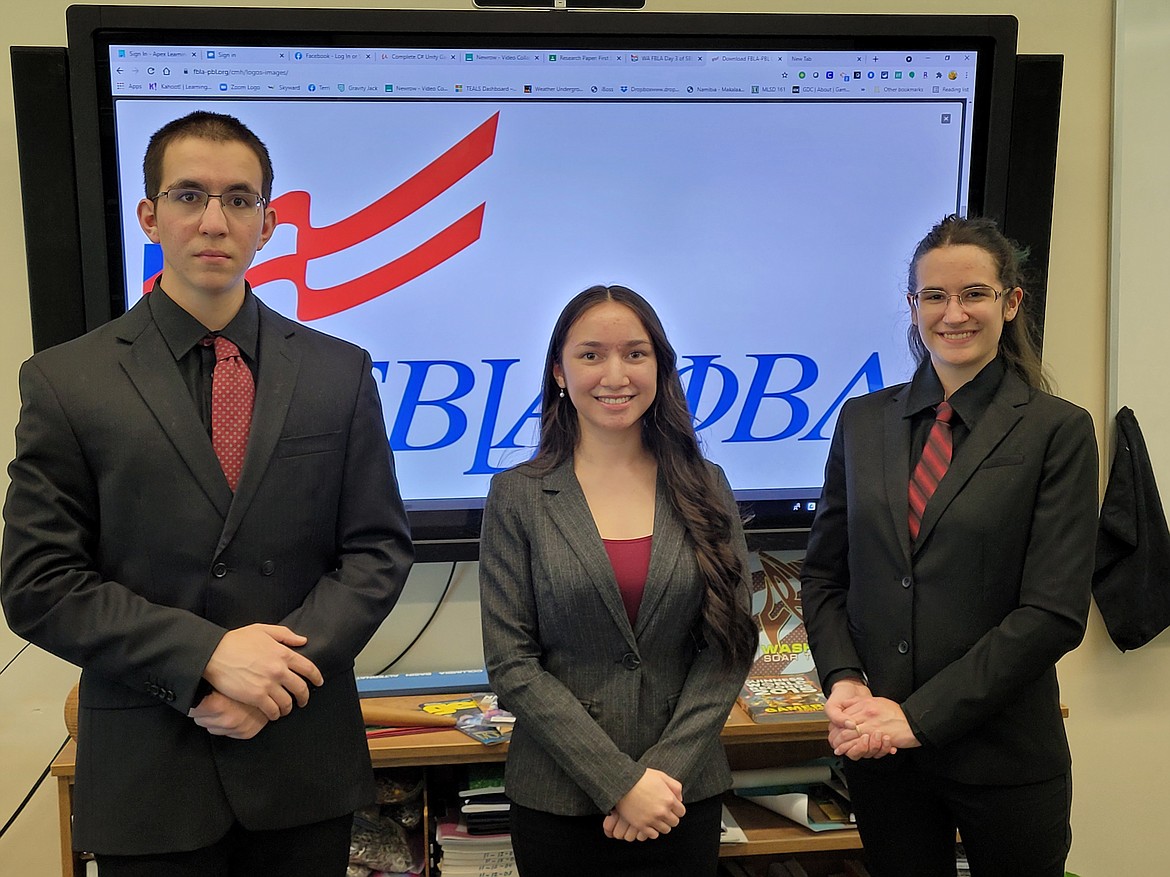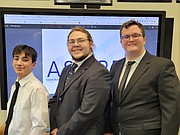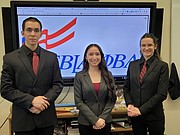Game on: Columbia Basin Technical Skills Center students qualify for national FBLA competition
MOSES LAKE — Building a video game with a deadline works better when it’s a collaborative effort. That’s the conclusion reached by students at Columbia Basin Technical Skills Center after teams took first, third and seventh place in Future Business Leaders of America (FBLA) computer game and simulation competition.
The first place team of Maya Armacost-Felton, Audrey Tran and Ben Gales and the third place team of Mikey Ruffle, Logan Beck and Andrew Pannullo will advance to national competition in late June, which will be virtual, so the teams will assemble at the skills center and make their presentations from there. The team of Roberto Santos and Angel Torres finished seventh.
The competition required building a game from concept to finished product.
“The topic was a puzzle game,” Gales said.
“We were given free rein on pretty much everything else,” Armacost-Felton said.
The state-winning team took their cue from ancient history, literally, choosing to base their game on the legends of the Minoans and the labyrinth that housed the Minotaur. The legend involves a fantastic creature, part man and part bull, hidden in a maze under the palace of King Minos on what is now Crete. The legendary Minotaur was not a nice guy, tending to kill and eat people sent into the maze. The Minotaur in the video game isn’t any better. The goal of the game is to rescue captives before the Minotaur gets to them -- or to the player. Solving puzzles set up along the way gives the player more weapons to fight the creature and free the captives.
Tran said the inspiration came from her brother, who was studying ancient history.
“We were constantly talking about Greece,” Tran said.
They named the game “Labyrinth of Shadows.” It’s three-dimensional, with players competing as part of the game.
Beck, Ruffle and Pannullo chose a space battle.
“It’s called ‘Laser Defense,’” Ruffle said.
“I thought it was called ‘Space Defense,’” Beck said.
Either way, it’s what’s known as a “top down” game, with players looking down on the action. It’s mostly two-dimensional, but they added some 3-D elements.
“Top down, but with a little bit more dimension,” Ruffle said.
“It was heavily influenced by old shoot-em-up games,” Pannullo said.
“You can fly around, you can shoot things,” Ruffle said.
“It turned out to be very fun,” Pannullo said.
The team’s inspiration was the classic game “Space Invaders,” and the idea was to give it a retro feel, just like those early video games.
Ruffle said they opted for a 2-D game due to a late start, and because they had to change the team during the design phase.
The designers didn’t start from scratch – there are basic gaming programs. The exception was the Minotaur.
“Everything about him was built from scratch,” Armacast-Felton said.
In a video game, everything must be programmed, every movement and every action, whether it’s a character running down a corridor or a fighter swerving away from the enemy.
“Behind every asset that makes this game what it is is a block of code that tells it what to do,” Beck said.
Gales led the way on programming for his team, and said he could usually figure out the commands. When he had trouble, he could consult the vast amount of knowledge online. When he needed help, he discovered most of the time people had already asked the question and had it answered.
Gales said they wanted their characters to be more active, do more fighting, but that’s a real challenge.
“The logistics are very difficult,” he said.
Armacost-Felton and Tran were in charge of the design, and said the team wanted a game that would be accessible to everybody.
“Anybody can look at our game and see what’s going on,” she said.
Tran said they based their design and characterization on artifacts and ruins of ancient Greece.
“Putting a little bit of a fantasy spin on it,” she said.
They wanted to make the Minotaur a fighting creature, but that was a little too complicated for the time available. They also wanted players to fight with swords, but that, too, had to be sacrificed due to time constraints.
“It would be fun (to add more elements), though,” Armacost-Felton said.
“We still can,” Tran said. “‘Labyrinth 2.0.’”
The “Space Defense” team split up the work, too.
“Kind of a collaborative thing,” Ruffle said.
“Each of us had a part to play,” Pannullo said.
“Mikey was really the brains behind the coding,” Beck said.
Pannullo wrote the script and Beck was the producer, working to pull all the pieces together. Beck said the most important thing was the presentation to the judges. They could have made any game, but the way they presented it was key, he said.



